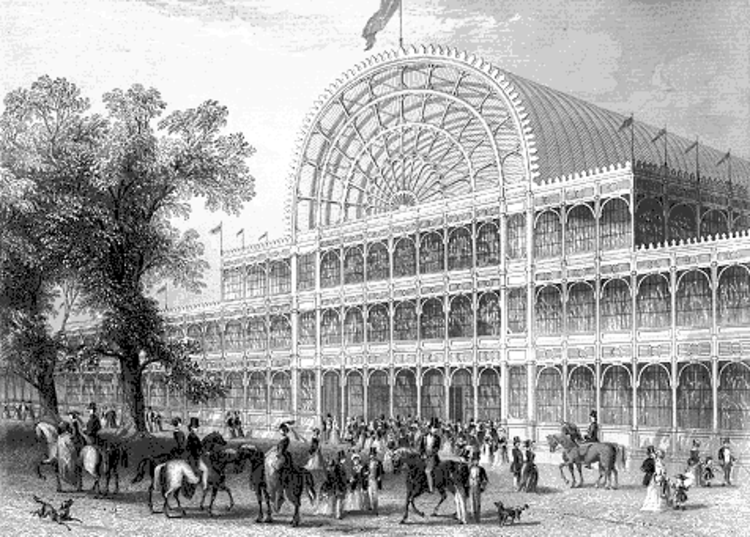Report of the Twenty-Fifth Meeting of the London D. H. Lawrence Group
The real ‘Young Russian’: the daughter of Boris De Chroustchoff in conversation with Catherine Brown
Friday, 18th November 2022
By Zoom
18.30 onwards UK time
ATTENDERS
Around 17 people attended, including Shirley Bricout in Brittany and Nicolás Maurokefalides in Mexico City.
INTRODUCTION
One of the denizens of Women in Love’s London Bohemia is a ‘young Russian’ named Maxim Libidnikov. He is notably the one sober member of the party, and shares with Julius Halliday (based on the composer Philip Heseltine/Peter Warlock) the flat to which the party retire after leaving ‘The Pompadour’ (based on the Café Royal). He acts as a graceful pander between Gerald and the Pussum, and the following morning joins in a discussion between the protagonists Gerald and Birkin about an African sculpture of a parturient woman. The editors of the 1987 Cambridge University Press edition, John Worthen and Lindeth Vasey (the edition used for all page numbers below), suggest that his name derived from Lawrence’s friend Maxim Litvinov and that the character himself ‘may be a recreation of Heseltine’s friend Nichols’ (p. 538). In 2019 I (Catherine Brown) published an article in Journal of DH Lawrence Studies which considered and dismissed the Nichols connection, but pursued the Litvinov angle as a way of tracing Lawrence’s shifting relationships to Russia and its politics from 1914 onwards. My research also identified a Boris de Chroustchoff as a possible model for Libidnikov, but I did not develop this speculation (though I did argue that Libidnikov is clearly not a revolutionary, and more likely to have been on the side of the Russian Embassy in London than that of the Soviet Embassy eventually set up by Litvinov with his wife, Lawrence’s friend Ivy Low). I had since become acquainted with Natasha, daughter of de Chroustchoff, who convinced me that Libidnikov is indeed closely modelled on her father.
In the meeting I interviewed Natasha about her father, and this record of the meeting will form the basis for an addendum and correction to my JDHLS article.
Also present was Rhian Davies, an expert in Welsh music and especially that of Peter Warlock (Philip Heseltine), who gave her own a presentation of her own on Heseltine and his connections to Boris and Lawrence.
Natasha de Chroustchoff read anthropology at University College London and subsequently worked for an archaeologist. She then became a trainee social worker, obtained an MSc in Applied Social Studies at Oxford, and spent her working life in the field of mental health as a counsellor and therapist. Since moving with her partner, an academic, to West Wales in 1994, she has raised her two sons, kept animals, grown vegetables, volunteered as a cook in a surplus food cafe, been involved with refugee resettlement in her town, taken natural history photographs and become a local history buff (and now a grandmother.)
Rhian Davies has worked as a freelance music historian since 1988, and her pioneering research is credited with restoring several composers to the international repertoire, notably Morfydd Owen, the subject of her Doctorate, television documentaries for BBC Two and S4C, and the bilingual pictorial biography Yr Eneth Ddisglair Annwyl / Never So Pure a Sight. She studied at Aberystwyth, Oxford and Bangor Universities and as a Visiting Fellow at The Lilly Library in Indiana, the Harry Ransom Humanities Research Center in Texas, and the National Library of Australia at Canberra. Her advocacy for Welsh music as a singer, writer and broadcaster, and as Artistic Director of the Gregynog Festival since 2006, was recognised with an Honorary Fellowship from Bangor University in 2019. Rhian’s most recent work, a collaboration with Peter Lord called The Art of Music: Branding the Welsh Nation, was published by Parthian Books in November 2022:She describes Peter Warlock as ‘the composer who has mattered longest in my life as I was brought up five miles from his family home in mid Wales and served as Vice-Chairman of the Warlock Society for ten years as well as founding the Peter Warlock Festival and making a documentary about his Celtic and occult interests for S4C. It was a great experience to film on location in Porthcothan and Zennor and to structure the script so that we heard Cornish and Irish as well as Welsh’.
All pictures of and by Boris below are shared with Natasha’s kind permission.
THE PRESENTATIONS
Natasha began by giving an overview of her father’s life. The name de Chroustchoff (to which ‘de’ was added when the spelling was transliterated from Slavonic characters in a period when it was fashionable to sound French) would in Russian be spelled the same as that of the former Soviet Secretary General known to us as Khrushchev – Хрущёв – although there is no known connection.
Boris was a member of a patrician family who lived in the Ukrainian territory of the Russian Empire. The family can be traced back to the first Chroustchoff who arrived from Poland at the end of the 15th century, and whose military support of the tsar was rewarded with land and status. In the nineteenth century there was a distinguished Crimean War general Alexander Khrushchev (1806-75). Boris’s family was cultured, liberal and Westernized, based in a manorial estate in the Kharkov region. His father Alexander studied at the University of Heidelberg before returning to run his estate. His mother Maria was the daughter of a professor of agronomy at the university of Kharkov; her portrait was painted by Dmitri Kardovsky. They hosted Ukrainian poet Taras Shevchenko and Russian artists such as Wassily Kandinsky and Alexei Yavlensky. A character called Chroustchoff is the eponymous demon in Chekhov’s play The Wood Demon.
Boris was born in 1892. He had an older sister and brother; the three had an idyllic childhood, and spoke Ukrainian as well as Russian.
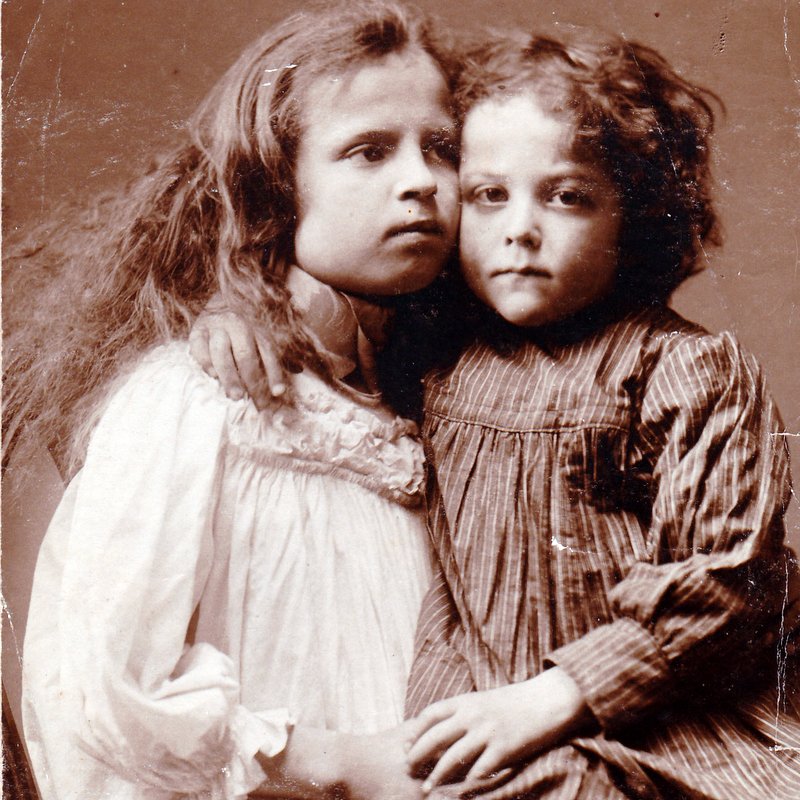
Boris (right) and his sister.
In 1900 the family moved to Munich, then the artistic capital of Europe, for its art, and his father opened an artists’ studio. (After the Revolution of 1917 the extended Russian family disappeared from view; in 2022 Natasha discovered that the family estate still existed in a derelict state; and that prior to the 2022 Russian invasion there were plans to restore it, following a resurgence of interest in the traditional manors of Ukraine and their tourist potential). In Germany Boris’s parents’ marriage broke down and his brother died. His mother and sister returned to Russia whilst Boris and his father moved to Switzerland (the father marrying the family’s Scottish governess), where Boris became an accomplished Alpinist.
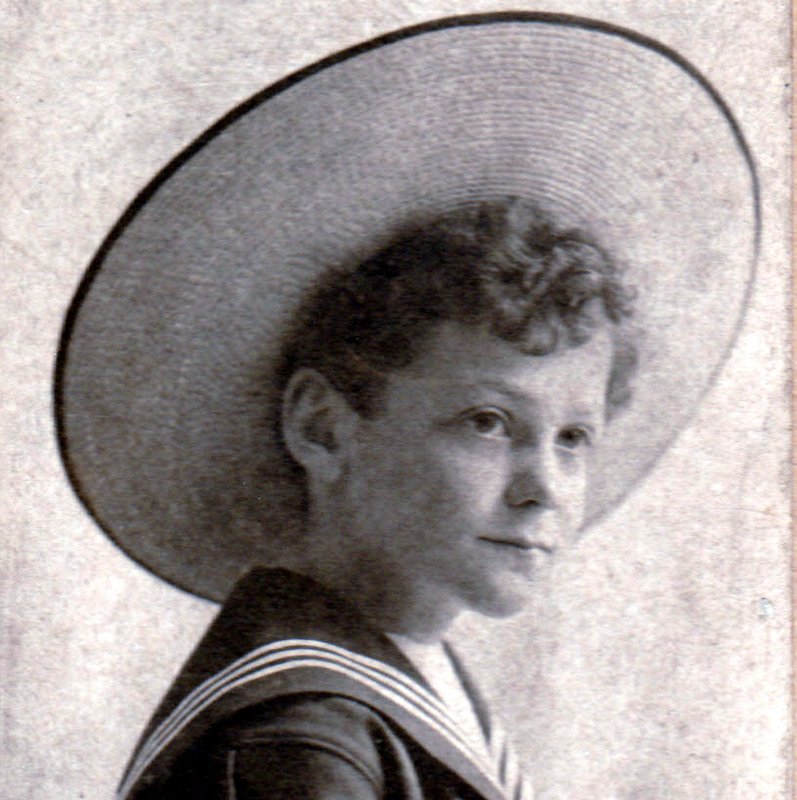
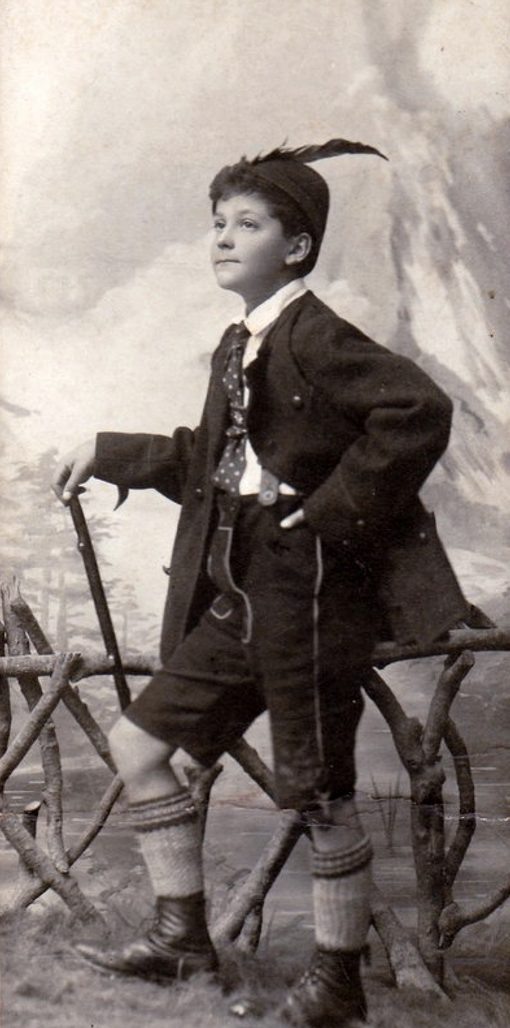
He was then sent to Harrow School, and in 1912 to Lincoln College, Oxford, to study for the (relatively new) Diploma in Anthropology. His main interests lay in ethnography and ethnology; he was already a collector, and made several donations to the Pitt Rivers Museum. However, for reasons which probably included overspending, a lack of diligence, and the War, he never completed his Diploma.

Boris de Chroustchoff’s entry in the Lincoln College Matriculation Book for 1912; thanks to the archivist of Lincoln College Oxford for supplying this
In 1914 he met Philip Heseltine (professional name Peter Warlock, model for Julius Halliday in Women in Love) through the Oxford Society for Psychical Research. Boris claimed that for many years he was Philip’s closest friend, and for a time they shared flats in Chelsea and Maida Vale with an Indian manservant who produced the Indian meals favoured by Boris. They frequented the Café Royal (82 Barry Smith, quoting C Gray, Musical Chairs of Between Two Stools (London, 1948, 291) along with Minnie Lucy Channing (or Puma), on whom the character of the Pussum is based, and Heseltine’s future wife.
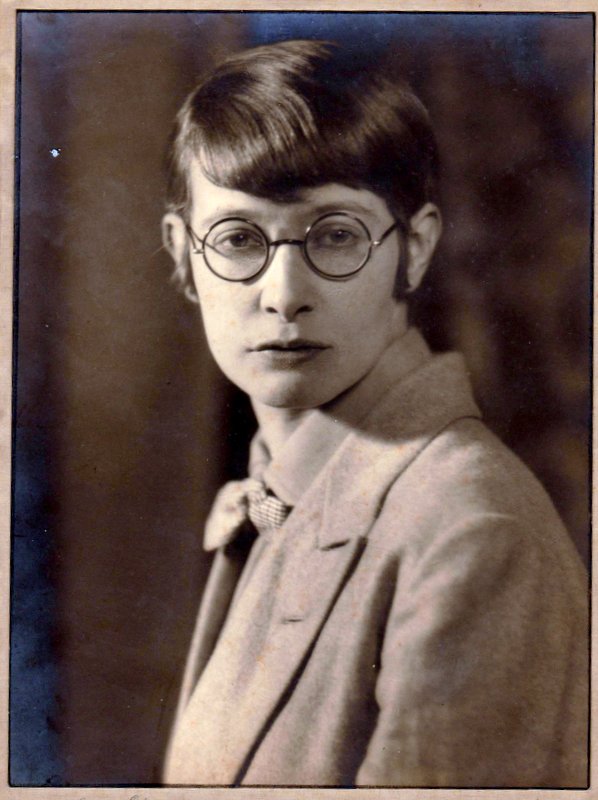
Judith Wood ‘Puma’
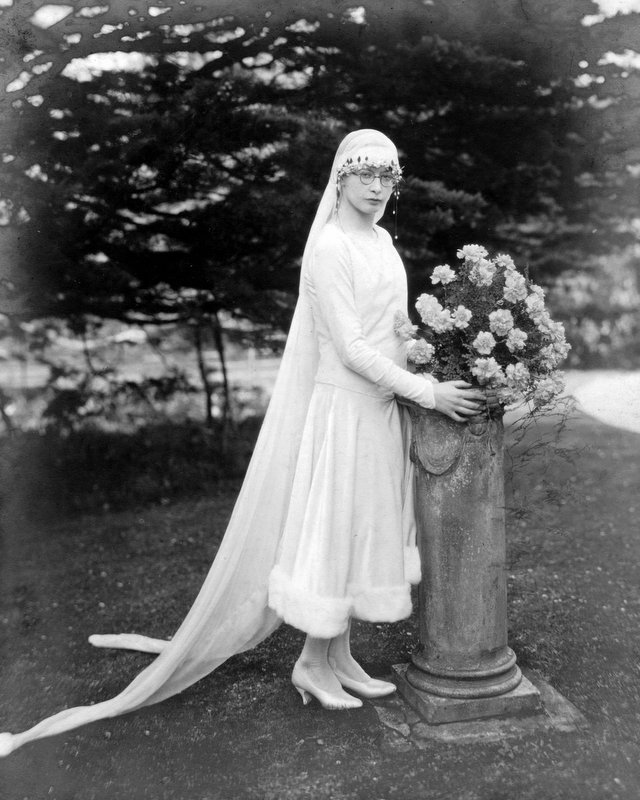
‘Puma’ on the day of her marriage to Heseltine
Boris was working as a postal censor for the War Office, since he could speak several languages (he was not eligible for the British Army). It was in his and Heseltine’s flat that, Boris stated, Lawrence first encountered tribal art, of which de Chroustchoff had built up a large collection by buying from local dealers, but not ‘in the field’. Of this collection Natasha has inherited all that survived the Second World War.

Boris and Philip Heseltine
Asked whether Boris and Heseltine really went about naked in their flat, Natasha responded: ‘I’ve no idea but if they did it would hardly be surprising. They were young men sharing accommodation and both has been at public school where stripping off for swimming etc. was the convention.’
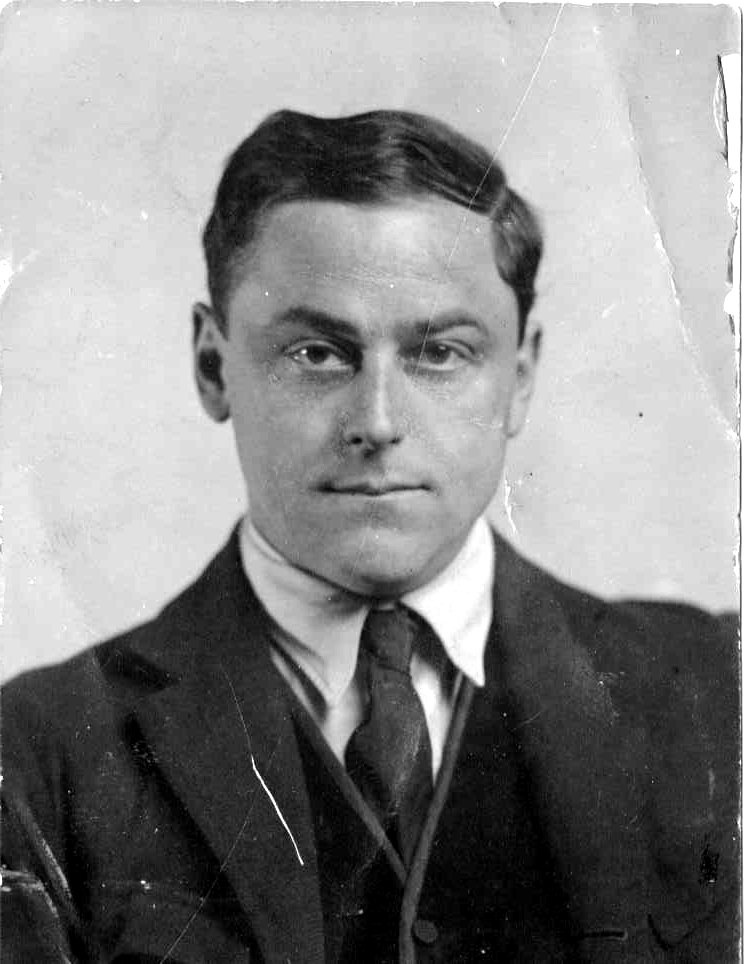
‘Maxim, the prim young Russian with the smooth, warm-coloured face and black, oiled hair was the only one who seemed to be perfectly calm and sober’ (Women in Love, CUP, p. 69)
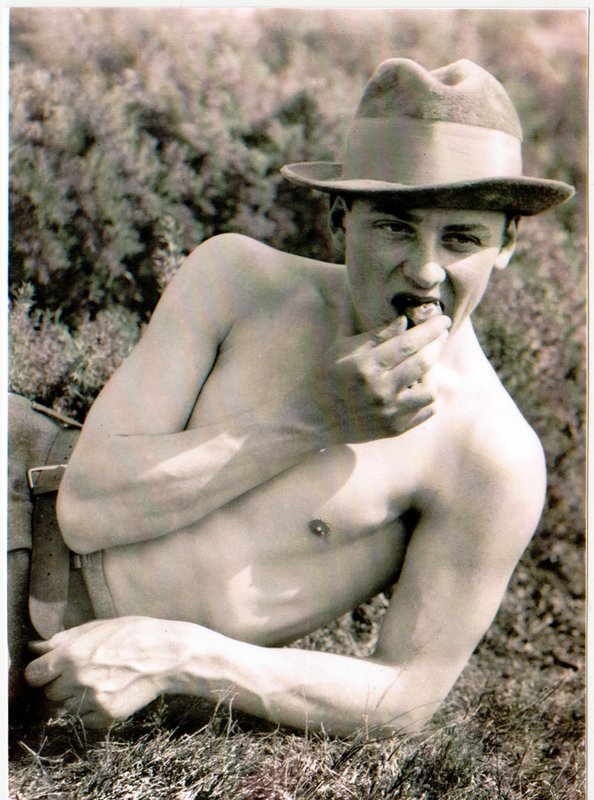
‘Gerald looked at him, and with a slight revulsion saw the human animal, golden skinned and bare, somehow humiliating … Gerald glanced at him, and saw him, his suave, golden coloured body with the black hair growing fine and freely, like tendrils, and his limbs like smooth plant-stems. He was so healthy and well-made, why did he make one ashamed, why did one feel repelled? Why should Gerald even dislike it, why did it seem to him to detract
from his own dignity. Was that all a human being amounted to? So uninspired! thought Gerald … Gerald looked at the group of men, the Russian golden and like a water-plant, Halliday tall and heavily, brokenly beautiful, Birkin very white and immediate, not to be defined, as he looked closely at the carven woman.’
(Women in Love, CUP, pp. 78-79)
Lawrence first mentions de Chroustchoff in a letter of 22 November 1915 as ‘a young Russian anthropologist and bibliophile’, and ‘a ‘possible’ for the new Rananim’ [289KW, 7L, 78]
Lawrence invited him and Cecil Gray to visit him in Cornwall; Natasha’s position was that
‘I am not even 100% certain that my father did visit Lawrence in Cornwall although it’s highly likely and I believe that he did. But exactly when, where and what occurred I cannot say. Having lived in Munich as a boy he could well have been involved in the singing of German songs – I can imagine that. He would have jumped at the chance to get out of London. He relished remote country areas, was a great walker and was also keenly interested in obscure languages. He owned Cornish dictionaries and maps. And of course he married a Cornish woman.’ According to Mark Kinkead-Weekes in his biography Triumph to Exile 1912-22 Boris did indeed visit the Lawrences in July 1917 (386, 816KW), and they remained in mutual contact until 1928.
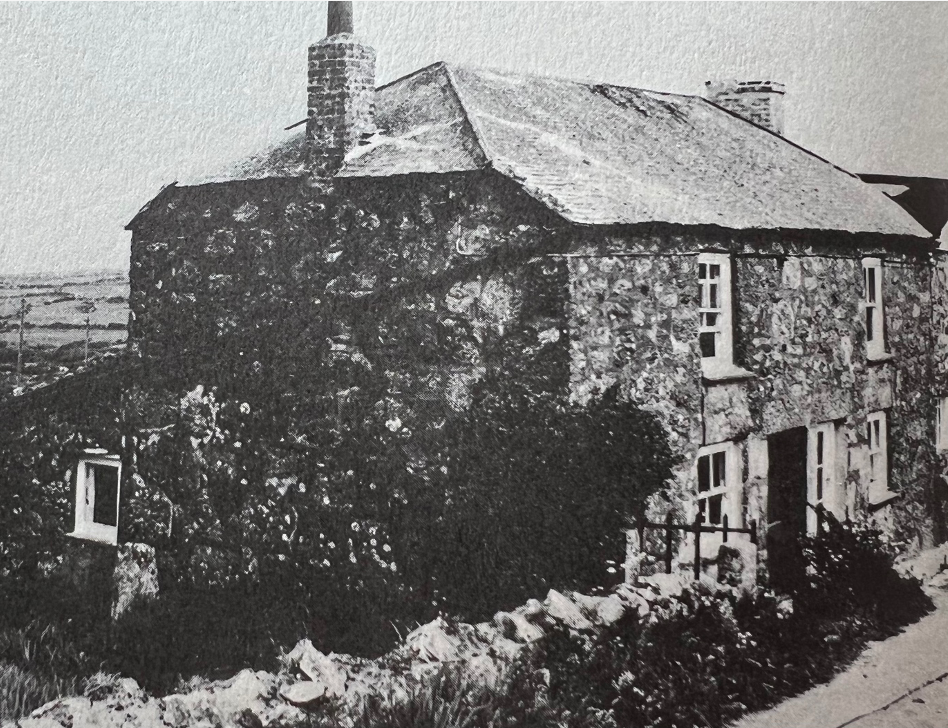
The Lawrences’ cottage at Higher Tregerthen; taken by Boris
Natasha observed: ‘So, Boris would have been in his mid/late 20s when he knew Lawrence; his English was perfect – he had no foreign accent, just sounded like an upper class Englishman of the time; and his manners were faultless. He was fairly small (around 5’8″) and slim, with dark hair, and very robust – he walked, bicycled, climbed, drank, cooked and caroused. His personality was unusual, magnetic even, and he appears in various guises in a number of novels. Nevertheless he slips through the literature of, and about, the period like a Will o’ the Wisp: now you see him, now you don’t. My father was not himself a creative individual in the typical sense, but he had a personal charisma that attracted those who were. His background, the depth and extent of his knowledge (especially of esoteric ‘niche’ subjects), his appearance and charm seemed to be magnetic to anyone who was not satisfied with conventionality.’
[Catherine would add that he gets bare mentions in Warlock/Heseltine biographies. He is not mentioned by Cecil Gray in his book on Peter Warlock: A Memoir of Philip Heseltine (London: Jonathan Cape, 1934), and in Brian Collins’ Peter Warlock: The Composer (Aldershot: Scolar Press, 1996), 80, 118 there are just two short mentions in footnotes of de Chroustchoff as a friend of Heseltine married to Phyllis Crocker.]
Natasha continued her narrative by stating that Boris did not keep in touch with Lawrence after the latter left England for the last time, and later fell out with Philip Heseltine. He had become romantically involved with the Cornish artist’s model and craftswoman, Phyllis Vipond Crocker, who had been living in a cottage just outside Zennor during de Chroustchoff’s visit (Heseltine, incidentally, was also attracted to her), but they did not marry until 1921, after Phyllis’s mother had moved to London with her three daughters in order to live with and later marry the antiquarian book seller Irving Davis. Later in 1921 Phyllis gave birth to a son, Igor, who died in 2015. Boris, in partnership with his friend Lionel Jellinek, became an antiquarian bookdealer with a shop in Bloomsbury (The Salamander Bookshop). Boris and Phyllis’s marriage broke down within a few years and Boris subsequently married Ida Vera King, a young librarian living independently in London. In 1940 they moved to the Black Mountains of Breconshire to escape the Blitz, where Natasha was born just after the War had ended. Boris died in Oxford in 1969 aged 77.
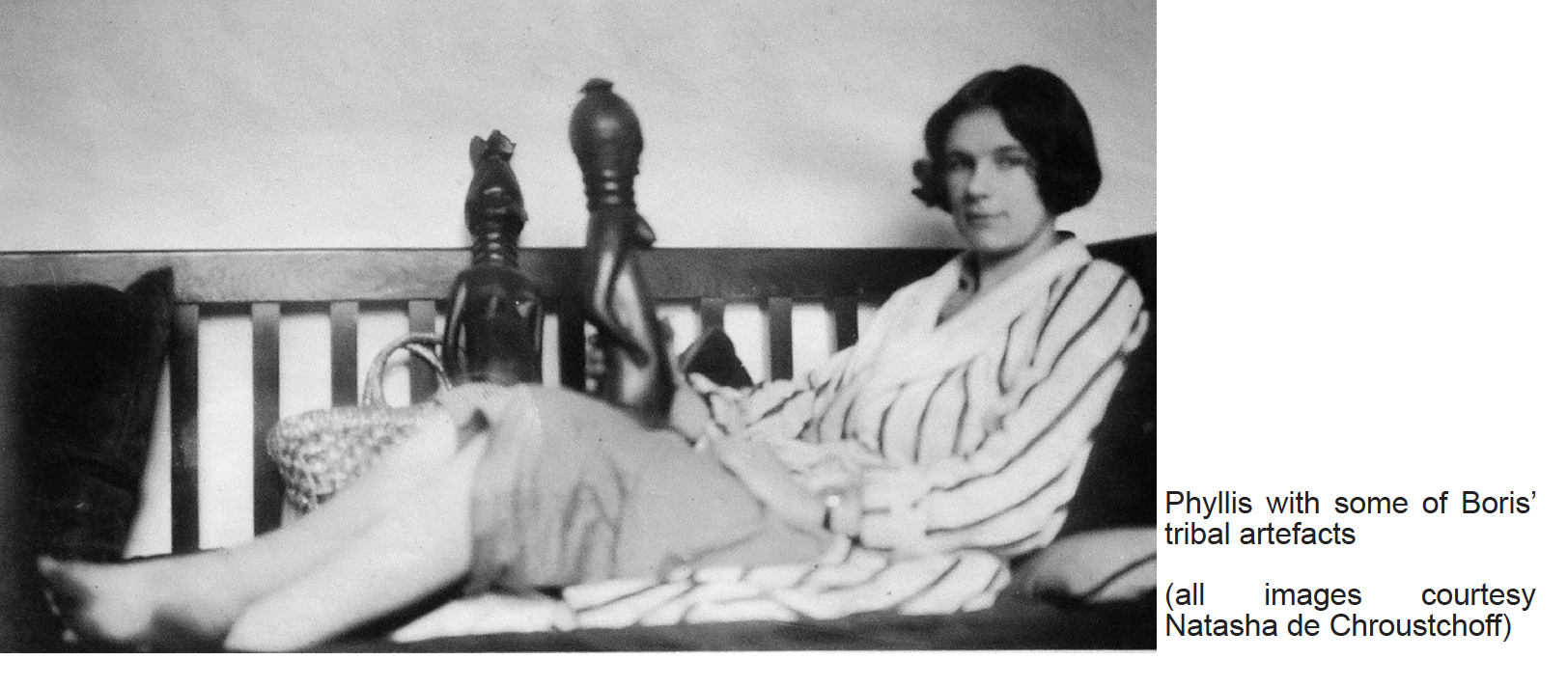
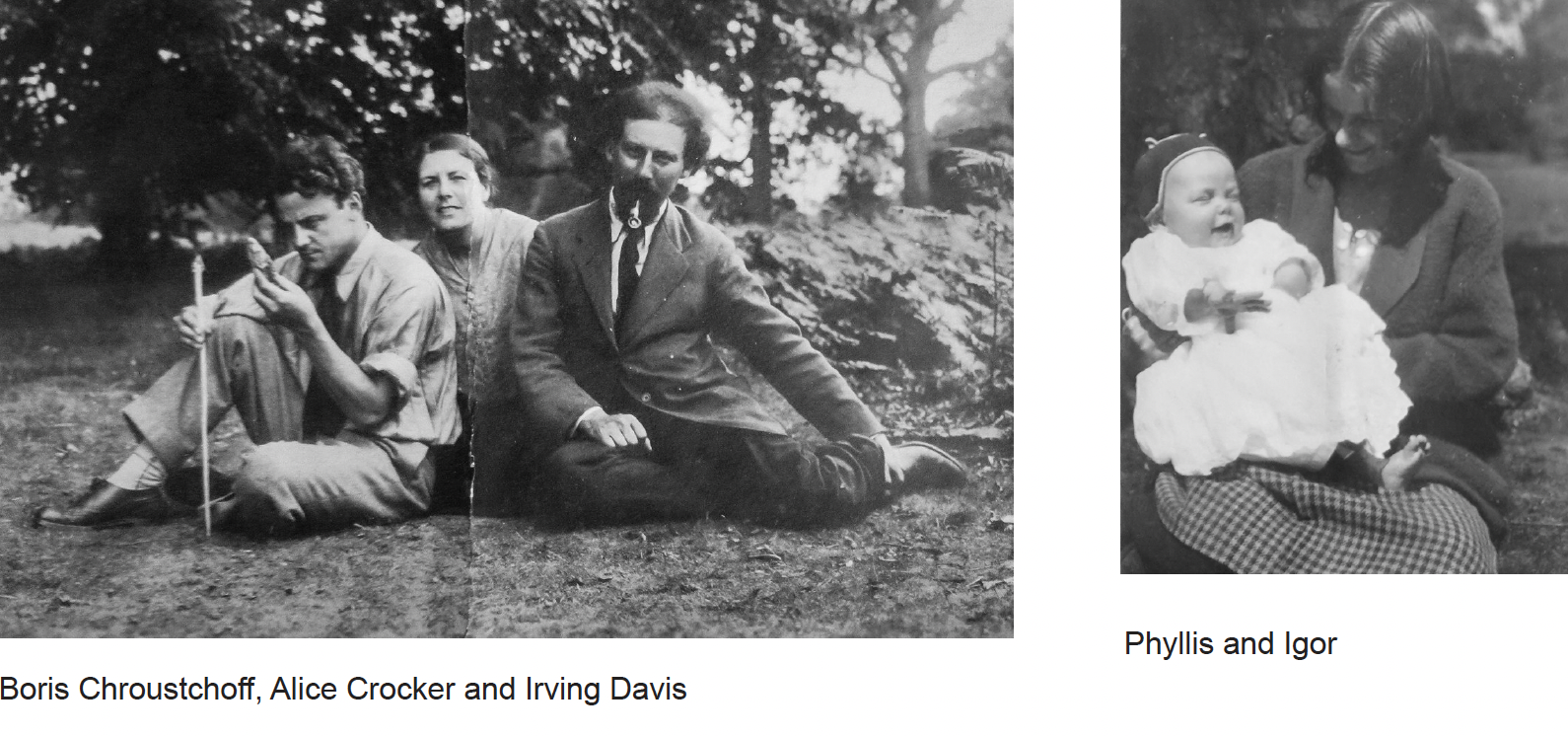
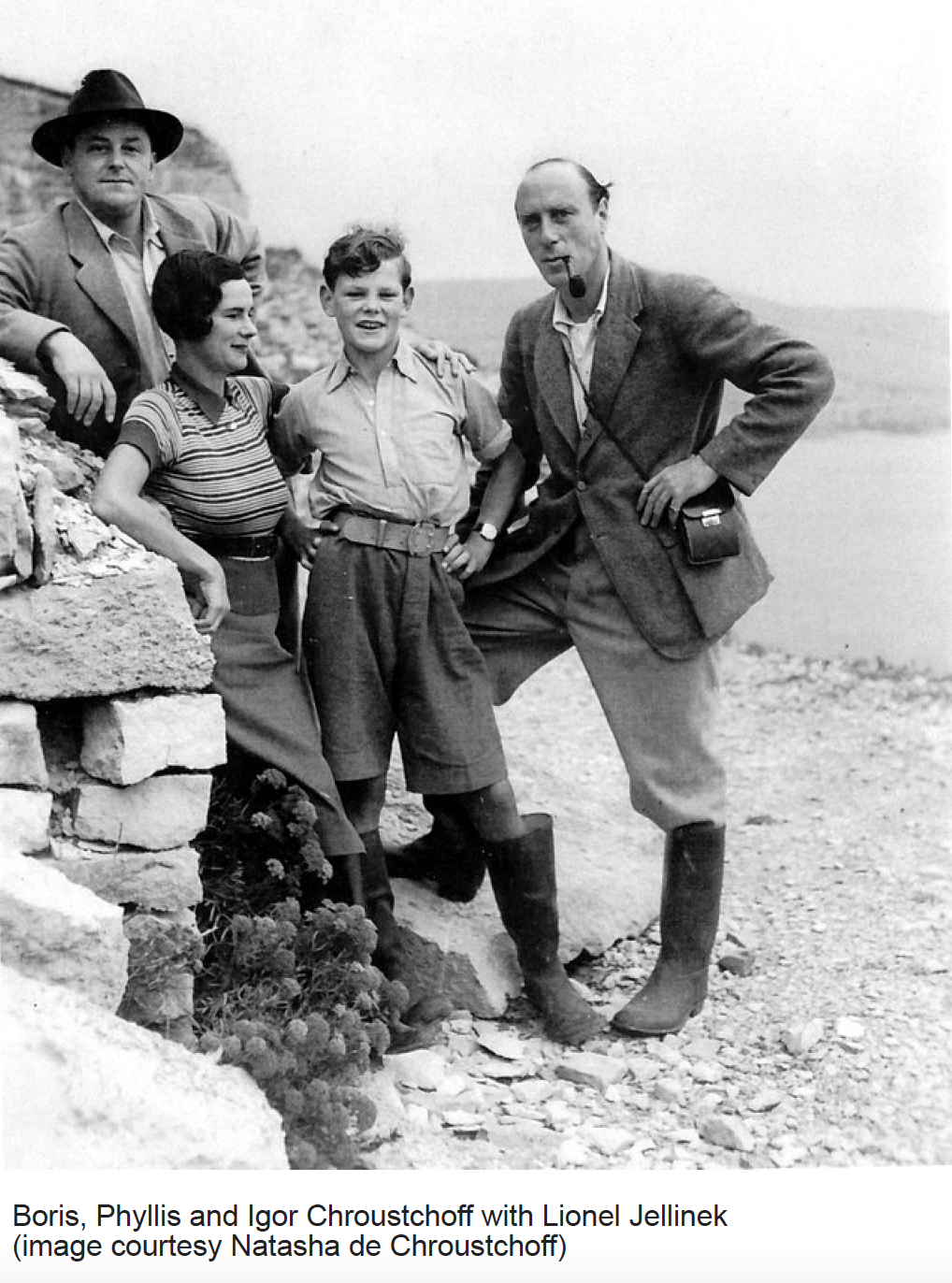

Boris with his second wife, née Ida Vera King (mother of Natasha)
AFRICAN ART
After this overview of Boris’s life the conversation turned to the subject of Boris’s collection of tribal art.
In Women in Love Birkin, Gerald and ‘the young Russian’ contemplate an African sculpture of a parturient woman (located in the flat occupied by Halliday and the Russian) as follows:
(Women in Love, CUP, pp. 78-79)
Natasha spoke on Zoom with the surviving collection arranged behind her, and brought down several pieces to show them close to her camera.
She also shared with us photographs (by Boris) of the collection as it was arranged in the past.

Boris with tribal art
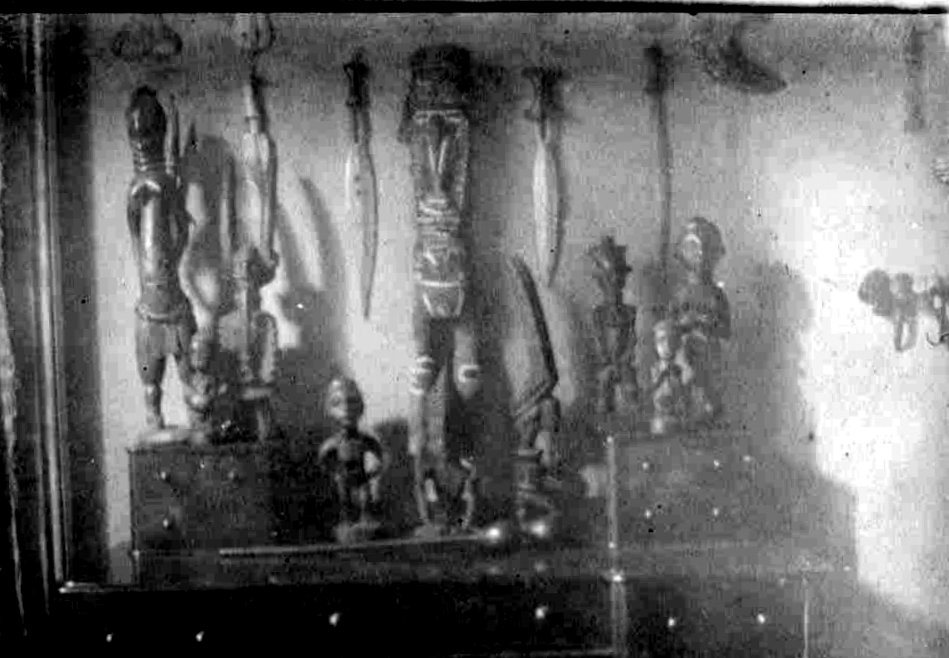

Boris’s room at Oxford
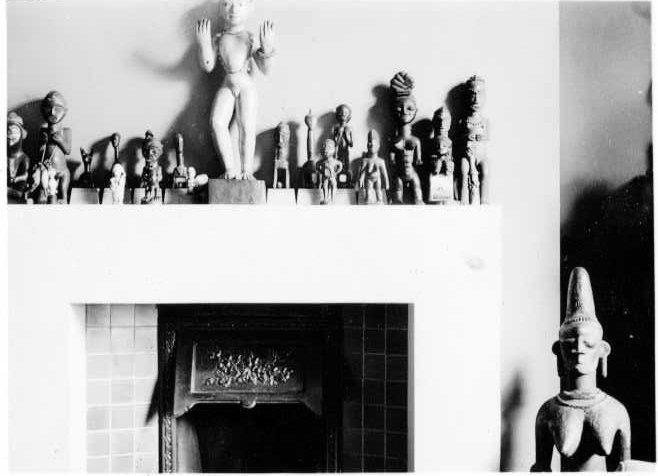
Unfortunately for those interested in the connection to Women in Love, there is no surviving sculpture – or photograph of a sculpture – of a parturient woman. Catherine contacted one of the African curators at the British Museum and obtained confirmation of Natasha’s opinion, that African sculptures of women in childbirth are extremely rare: ‘You are correct that African representations of women in the act of childbirth are indeed rare. Objects and rituals around fertility and motherhood are prevalent in cultural groups across the Continent, but images of parturient women are not.’
The curator did, however, ascertain that Boris had leant items to an exhibition of ‘Art from the Guinea Coast’ held at the Pitt Rivers Museum in Oxford in 1965 .
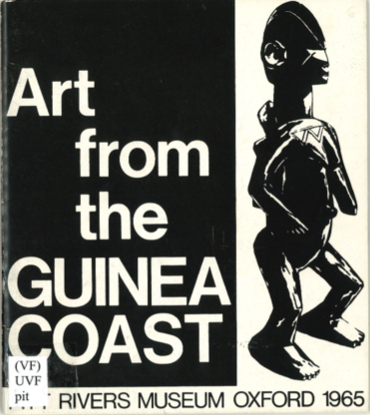
Credit is given to Pitt Rivers Museum, University of Oxford, for the use of this image

Credit is given to Pitt Rivers Museum, University of Oxford, for the use of this image
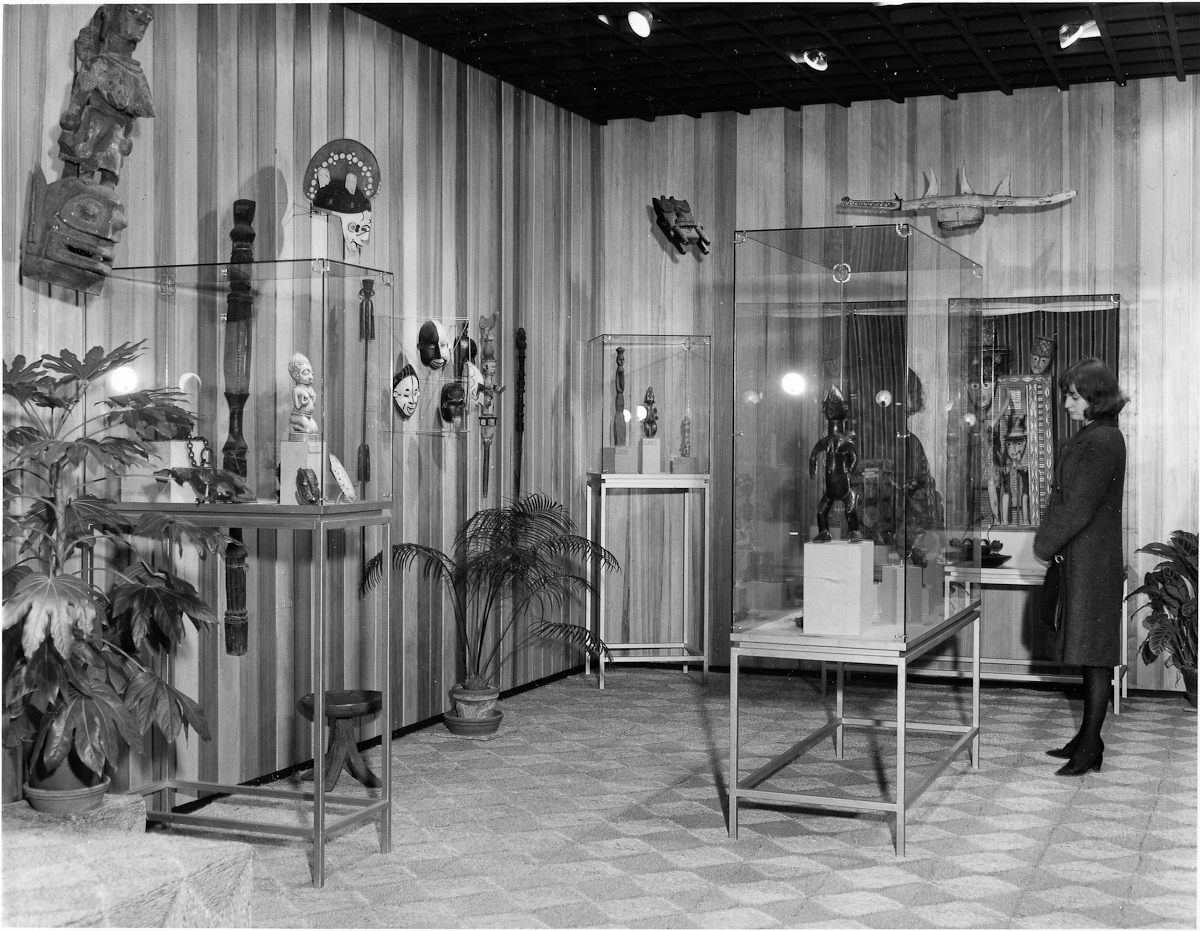
Credit is given to Pitt Rivers Museum, University of Oxford, for the use of this image
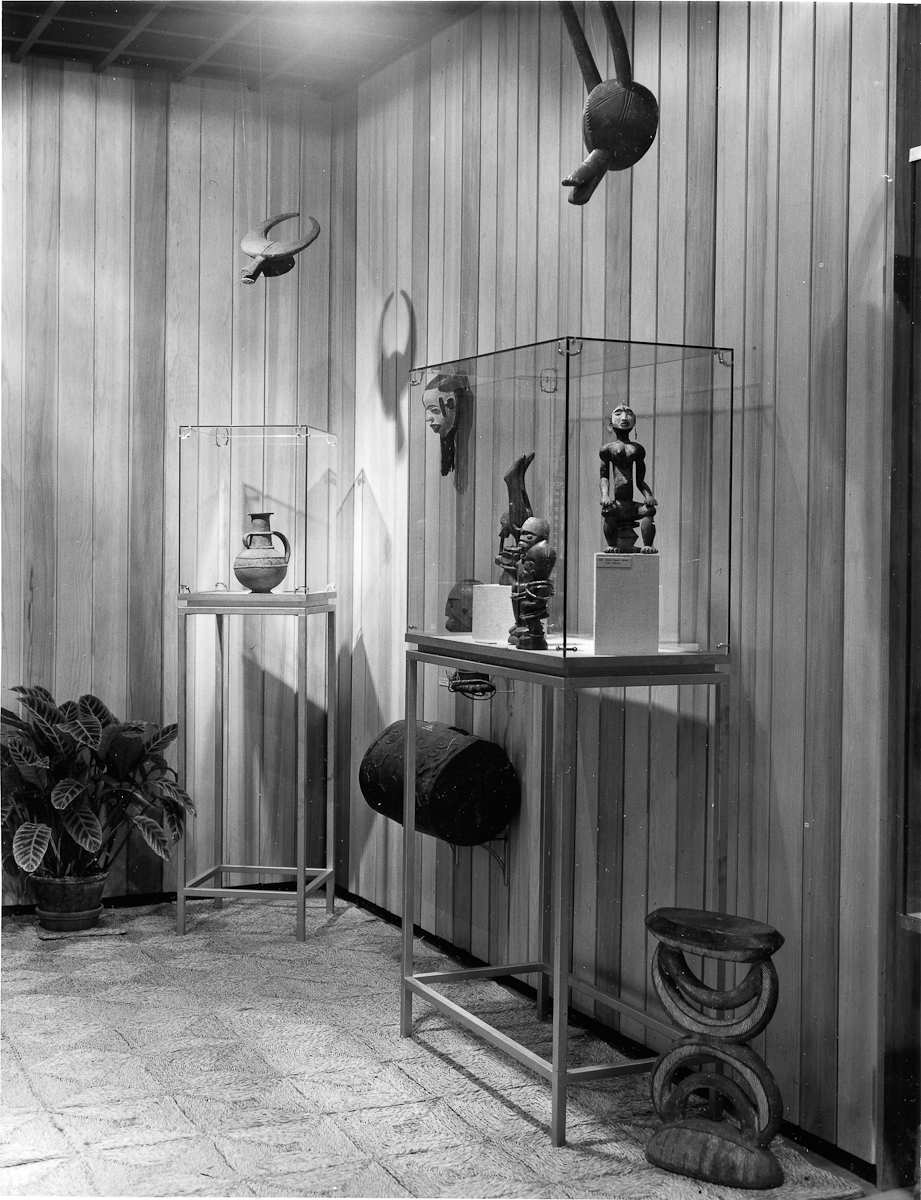
Credit is given to Pitt Rivers Museum, University of Oxford, for the use of this image
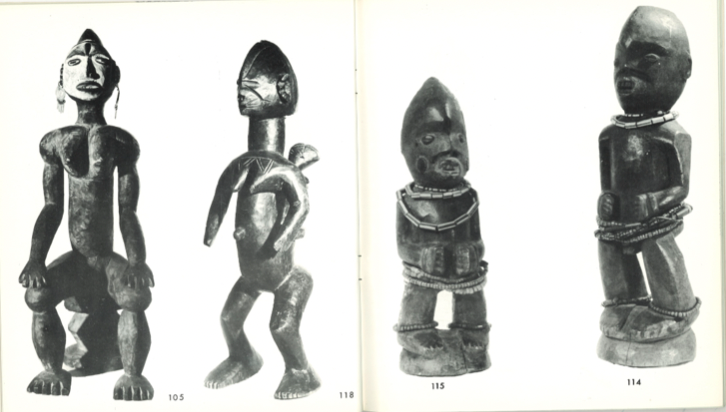
Credit is given to Pitt Rivers Museum, University of Oxford, for the use of this image
The museum’s report in 1966 notes that ‘In addition to the Museum’s own collections which formed the bulk of the display the Museum is grateful for loans from the Federal Government of Nigeria, the Oni of Ife, the Oba of Benin, the Dagacin Jebba Gungu, the Trustees of the British Museum, Mr. Hugh Nevins, and Mr. Boris de Chroustchoff, whose generosity made it possible to see the history of West African art in much greater depth than would otherwise have been possible.’ From the Museum’s archivist, Catherine obtained the catalogue to this exhibition, but there are not pictured or described any parturient women; the closest are the above, and Natasha confirms that these did not belong to her father. Either an actual sculpture of a parturient woman, which Lawrence saw, was lost from Boris’s collection – or else, interestingly, Lawrence invented this scene of childbirth.
Natasha tentatively speculates, however, that Lawrence might have been influenced by this Aztec figure:
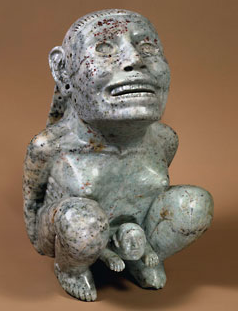
It was discovered in 1899, and provoked great interest amongst scholars and artists internationally. Boris took an interest in pre-Columbian art and archeology (Natasha has inherited some of his books on the subject), and it is likely that he was aware of it. In that case, it is conceivable that he showed a picture of it to Lawrence (though it does not correspond to Lawrence’s description of the African sculpture in all particulars).
RHIAN DAVIES
Rhian gave a detailed Powerpoint presentation about Philip Heseltine (Peter Warlock), his relationships to Boris, and to Lawrence. This constituted work in progress towards a forthcoming book [details? Topic? Planned publication date? Working title?], and therefore will not form part of this write-up. However, those interested may find here Rhian’s outline of Heseltine’s life:
Rhian noted that Heseltine had dedicated one of his songs – ‘Mr Belloc’s Fancy’ – to Boris; after introducing it, she played us this performance of the song that is available on YouTube.
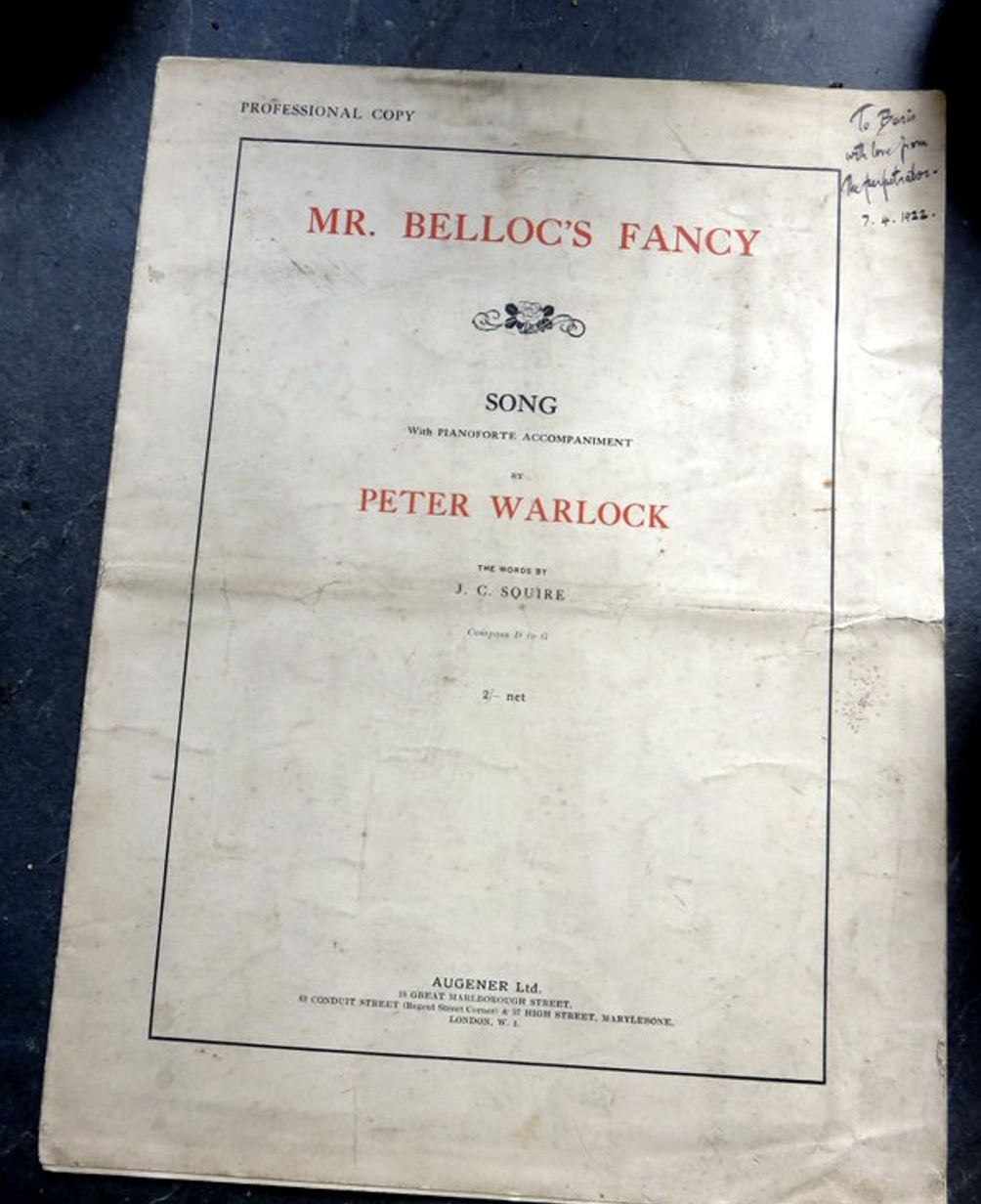
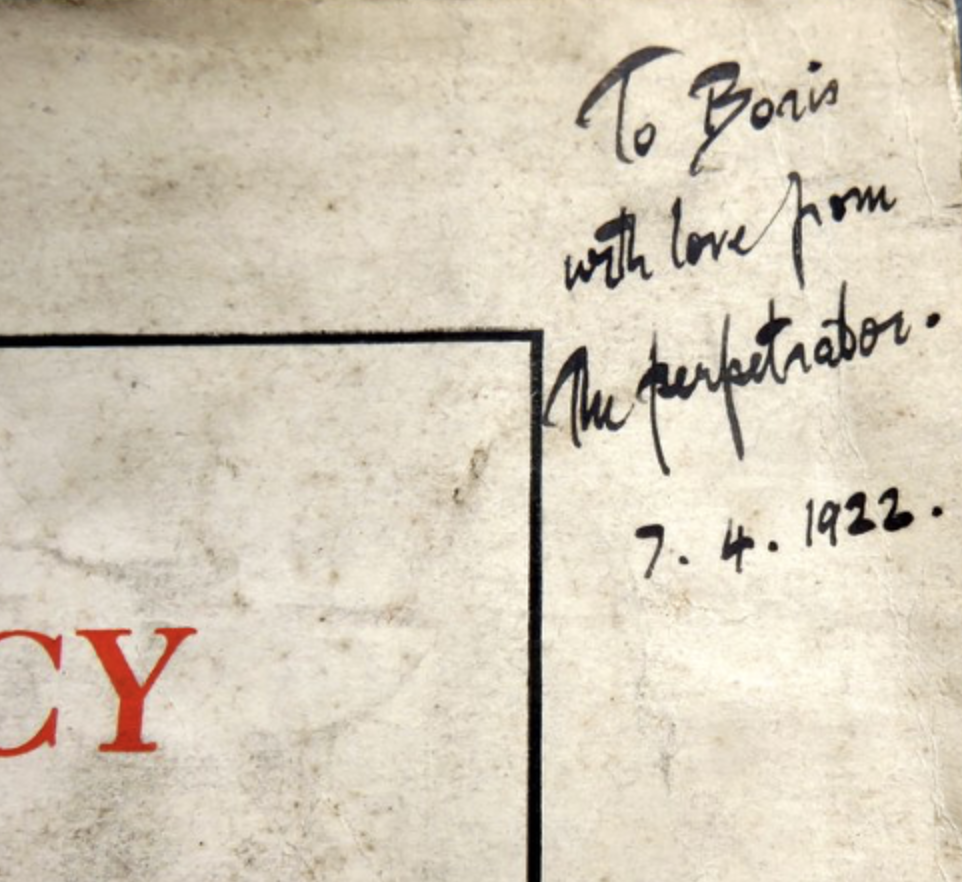
THE DISCUSSION
Nahla Torbay asked Natasha when she learned that her father had known Lawrence. Natasha responded that by the time she was born, her father was a reclusive and rural person who preferred reading to seeing people; he retained friends from the same period as that in which he had known Lawrence, but he saw them infrequently; Natasha was initially therefore not very conscious of the connection. This changed when Lady Chatterley’s Lover became a sensation at its unbanning in 1960. This rekindled her father’s interest in Lawrence; he read The Plumed Serpent and the 19XX biography of Lawrence by Harry T Moore The Intelligent Heart, and found in the latter a reference to Libidnikov that didn’t mention himself. He wished it to be known that the character was based on him, and therefore contacted him as follows
May 13th 1964
Dear Professor Moore,
On page 239 of the English edition of “The Intelligent Heart” you mention Maxim Libidnikov and suggest that “this may be partly a portrait of Koteliansky.”
No, it is intended to be a portrait of myself, B.de Chroustchoff; a little whimsy on the part of DHL.
I was a very old friend of Philip Heseltine from Oxford days and shared various flats with him, and it was through him that I met DHL in 1915 during the “Rainbow” crisis and saw him on and off until his last visit to England.
Incidentally I have a photo of “Pussum” that has never been published and I doubt whether there is another in existence. It is contemporary with “Women in Love.” If you would like to see it do not hesitate to ask me.
I knew DHL and Frieda very well, and also Orioli and various other personages who were about at that time. DHL and I got on very well together and I don’t think he abused me behind my back very much. But at one time he wrote some rather peevish letters to Cecil Gray bemoaning the fact that (in his usual phraseology) Gray “loved” me more than he loved DHL, and that it was a bad thing and no good would come of it. The letters were sold by Gray to some bookseller who decently remarked at the time that it seemed unfriendly to sell letters wherein a friend of his was mentioned in abusive terms just for the sake of gain when he (Gray) was perfectly well off.
Frieda of course was always talking about her children and we would speak in German about her family the von Richtofens. She was delighted to hear that I knew a cousin of hers, a von Richtofen who was in the same college as me at Oxford. DHL used to come to my house for a meal occasionally and one day I invited Cecil Gray who was on the point of marrying a Russian girl who was daughter of Countess Brassov, the morganatic wife of Grand Duke Michael, brother of Czar Nicholas II. The Lawrences arrived first and when I told DHL that Gray was expected and he was going to marry a Russian princess (that is what this lady was known as amongst her friends) he flew into a rage and squeaked petulantly about it, saying that Gray should not do such a thing. Everyone of course realised that he felt outdone by Gray marrying a “Princess” whereas he himself had only succeeded in marrying an ordinary Baroness.
The dinner party was not a success because DHL resented the fact that some of the dishes were unfamiliar to him. The climax came when, for dessert, Chinese lychees were served in some rather remarkable peacock blue Syrian blown-glass bowls [of mine] which provided a particularly delightful colour scheme. His rage was quite extraordinary because he had never tasted, or heard of, lychees and he could not bottle up his extreme annoyance at this.
I am just telling you this because the Lawrence of the biographies and the real Lawrence are quite different people. You will remember how he behaved over the little bitch [dog] that got pregnant without his permission and “betrayed” him.
For instance, at that time I had a collection of African sculptures and these are the things that Lawrence mentions as “wooden figures”. And the Indian servant was Nazim Khan who originally was a retainer of Shahid Suhrawardy – a friend of Heseltine’s and mine at Oxford – a patrician Indian Moslem from what is now called Pakistan. When Suhrawardy went away on a journey he asked us to look after Nazim and have him as a servant, saying that he only needed a bed, a little vegetable curry and an occasional shilling.
Accordingly, in The Priest of Love of 1974 Moore writes: ‘Boris deCroustchoff, a friend of Heseltine’s, has told the present writer that he was himself the model for Libidnikov’, and that he described himself as ‘a Russian bibliographer and London bohemian’ (Harry T. Moore, The Priest of Love, New York, 1974, p 286); his 1966 DH Lawrence and his World (Thames and Hudson) contains several photos taken and contributed by (though not attributed to) Boris.
When Ken Russell was planning to make his film of Women in Love, Boris wrote to him as follows:
Dec. 29th 1968
Dear Mr Russell,
I have heard that you are making a film of “Women in Love” by D.H.Lawrence.
This book of Lawrence’s has always been of particular interest to me because I was one of the characters in it, viz. “Maxim Libidnikov”.
Also I was a very close friend of “Halliday” (Philip Heseltine) and “Minette” – or “Pussum” (Puma, later to be Heseltine’s wife, and various other people mentioned in the book. In fact I even know the real name of the Indian servant who looked after Heseltine and me when we were sharing a flat in Chelsea.
No doubt you know the book “Lawrence and His Circle” by Harry T. Moore. I provided some of the photographs reproduced in this book.
Philip Heseltine was at Oxford with me (just before and at the beginning of the first world war) and afterwards we shared flats in various parts of London. I knew Lawrence very well too and am probably the only remaining member of that particular circle of which Lawrence writes in “Women in Love”.
Naturally I am very interested in the film you are making, and knowing that you are very keen on accuracy in your films I feel you might like to get in contact with me. It’s amazing that I can even remember the shade of “Pussum”’s face powder as I often had to buy it for her when she was too lazy to get out of bed and go and buy it herself. Also the African figures mentioned in the book belonged to me. Lawrence had never seen anything like them before he saw my collection.
Yours sincerely,
(Boris de Chroustchoff)
Only in subsequent years did Natasha herself become interested in her father’s earlier life. Her half-brother Igor had always been strongly interested in the period. Born in 1921, he also pursued a life-long interest in discovering more about his forbears, learned Russian, and took a great interest in Russian culture.
After the meeting, Anthony Pacitto speculated in an email: ‘It was said that Lawrence originally saw Boris as a good candidate for his Rananim. However Natasha asserted that this would have been the last thing her father would have wanted – he being an individualist, a spendthrift young man about town, so not parsimonious self-sufficient Rananim material. But in his middle age, it seems, Boris retired to a lonely Welsh farmhouse and grew vegetables. Perhaps Lawrence in his psychic way saw already a side of Boris that Boris himself could not?’
